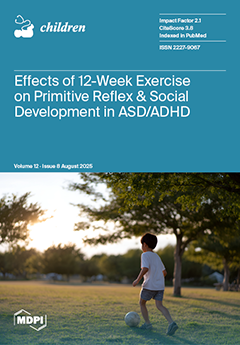Background and Aim: Atresia is the most common congenital anomaly of the esophagus, with an increased risk of complications after surgical correction. The aim of our study was to evaluate the risk factors associated with early and late postoperative complications in neonatal patients with esophageal atresia.
Methods: The study sample comprised 109 neonatal patients aged between 0 and 27 days of life who were prenatally diagnosed with esophageal atresia or diagnosed at birth. For the purpose of this study, neonatal and perinatal factors and factors associated with the mother’s medical condition were analyzed. Complications after surgical intervention were classified as early and late.
Results: Patients with early postoperative complications experienced significantly more frequent complications during delivery (
p = 0.002), asphyxia (
p = 0.038), and postoperative sepsis (
p = 0.045) and were more likely to have received medicamentous therapy (
p = 0.035). Patients with late postoperative complications had significantly more frequent complications during delivery (
p = 0.025), respiratory distress (
p = 0.043), and postoperative sepsis (
p = 0.010), were more likely to have received preoperative mechanical ventilation (
p = 0.014), and showed a significantly different frequency distribution among the different classes of the Spitz classification (
p = 0.008). A risk factor for early postoperative complications in patients with atresia in the upper part was complications during delivery (OR-3.09;
p = 0.007). The risk factors for late postoperative complications for patients with upper atresia were preoperative mechanical ventilation (OR: 2.77;
p = 0.041), postoperative sepsis (OR: 2.60;
p = 0.028), and belonging to relatively high- and high-risk groups according to the Spitz classification (OR: 3.50;
p = 0.022).
Conclusions: In neonates who have undergone surgical intervention for esophageal atresia, a risk factor for early postoperative complications is complications during delivery, while the risk factors for late postoperative complications are preoperative mechanical ventilation, postoperative sepsis, and belonging to relatively high- and high-risk groups according to the Spitz classification. Therefore, a multidisciplinary approach and continuous monitoring are essential to reduce morbidity and mortality, as well as to improve quality of life, in these patients.
Full article






